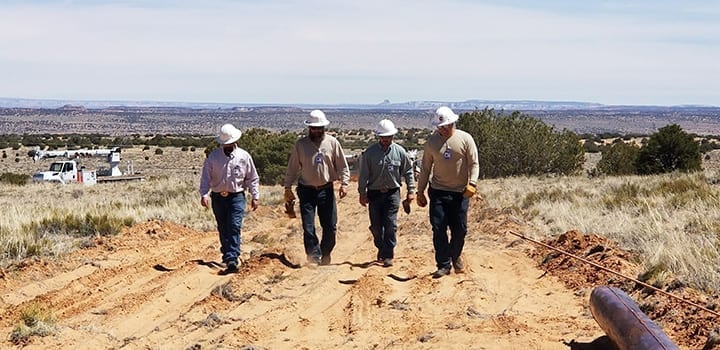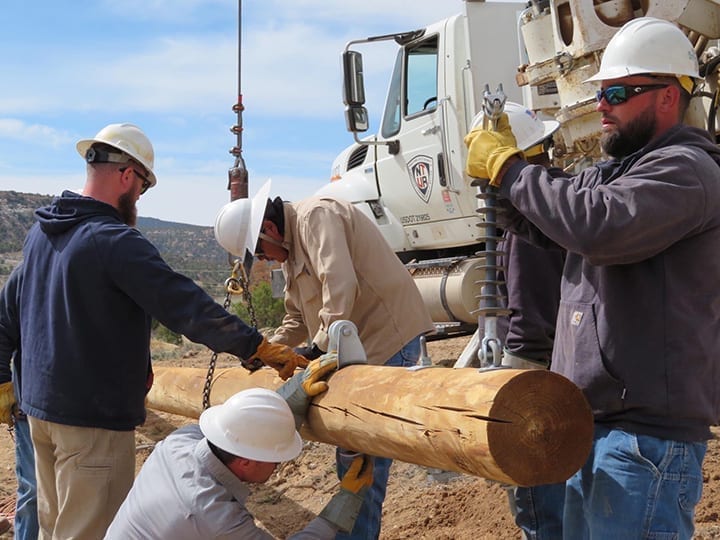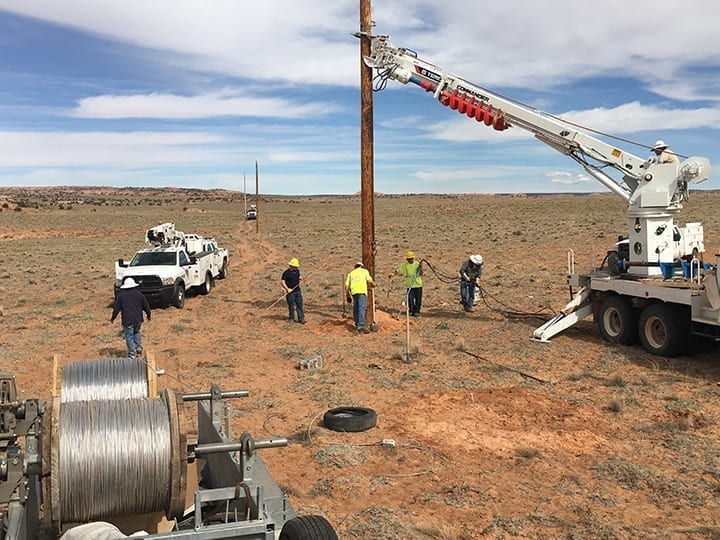Did You Know There Are 60,000 U.S. Citizens Who Lack Access to Electricity?
I think most people know that there are a lot of people around the world who don’t have access to electricity. The International Energy Agency has said the number is about 860 million with the majority of them—nearly 600 million—living in sub-Saharan Africa.
What may be less widely known is that there are people in the U.S. who still lack access to electricity, and I’m not talking about people who have chosen to live off the grid. These are people who would actually welcome electricity into their homes. And it’s not just a few folks, I’m talking about at least 15,000 families.
You might be thinking, “What?!? That’s crazy!” I’ll admit, that’s what I thought when I heard that the most prosperous country in the world still has people living within its borders who lack access to electricity. But, that is the case, and I think it says something about how our nation has mistreated our Native American population. That’s because the people I’m speaking of are on the Navajo Nation.
A Forgotten Population
The Navajo Nation is the largest Indian reservation in the U.S., comprising more than 17.5 million acres, or more than 27,000 square miles, across northeast Arizona, northwest New Mexico, and southeast Utah. It is approximately the same size as West Virginia. The Navajo Tribal Utility Authority (NTUA) is the multi-service utility that provides electric, water, wastewater, natural gas, and communications services for the Navajo Nation. NTUA is the largest Native American-owned utility in the U.S. It has about 755 employees—97% of whom are of Navajo descent.
“When I joined the utility about 12 years ago, it was kind of an eye-opening experience to learn that so many people in the United States still don’t have utility services,” Walter Haase, general manager for the NTUA, told POWER.
“We have about 15,000 families still in the United States—60,000 people—who don’t have electricity. They’ve never been connected to the electric grid. We have about 18,000 families that don’t have running water in their house,” said Haase, who is a licensed professional engineer.
NTUA’s service territory is vast, and it only averages about four customers per mile. Furthermore, the per capita income in the region is only about $10,700, which is about one-fifth the U.S. average of $53,497, according to The World Bank. That means Haase has to do his best to keep utility prices affordable, but that’s tough to do with such a high cost to serve.

A Basic Human Right
If you’re like me, it’s hard to even imagine life without electricity or running water. It means you can’t have a refrigerator, and you have to cook over a coal- or wood-fired stove. Similarly, you must heat your home using coal or wood, and you have no air conditioning or even window fans. No computer, no internet, no TV, and I haven’t even mentioned lights.
“You spend a lot of time just gathering the regular essentials or the normal essentials of life,” Haase said. He noted that many people must drive an hour to an hour and a half to get to the nearest store. And it’s not a Walmart; it’s a gas station. Drinking water is often stored in a 250-gallon plastic drum, which is hauled in the back of a pickup truck to be refilled at watering points dispersed throughout the territory. The water lasts three or four days, and then the cycle is repeated.
“It takes a lot of time and energy, and it’s expensive to deal with it that way,” said Haase. “So, getting these folks utility services that they deserve is paramount.”
The Light Up Navajo Program
Some progress has been made in recent years, however. In 2019, the NTUA partnered with the American Public Power Association to create a pioneering program called Light Up Navajo. The six-week pilot project extended electricity to 233 regional families.

“I had gone around with the American Public Power Association and did a lot of presentations to explain to folks what our people are going through and how hard it is on them and what it means,” Haase said. From those discussions, the innovative, history-making program was born.
The initiative leverages the concept of mutual aid or mutual assistance. The electric power industry has a long history of sending crews from outside an area to help utilities in need following hurricanes, earthquakes, storms, and other natural disasters. Although the situation on the Navajo Nation was a lack of power rather than a loss of power, outsiders were willing to help. Volunteer crews were brought together from across the country for a week or two at a time to install line and connect homes to the grid. NTUA provided the materials and lodging for the workers, and paid for the federal right of way, which is expensive and time-consuming, but the volunteers dramatically reduced the overall costs and time needed to complete connections.
“We had 137 volunteers from 13 different states and 28 different companies,” Haase said. “The goal is to keep building upon the program. We were going to do it in 2020. We actually had a much larger group of folks sign up. We were going for 12 weeks. We were going to take care of 300 families. But, unfortunately, the pandemic came in and we had to cancel those plans.”

If you or your company can support the Light Up Navajo initiative, please contact NTUA via email to [email protected] or call (928) 729-5721. It’s time to bring power to all U.S. citizens. ■
—Aaron Larson is POWER’s executive editor.
[Ed. correction (Oct. 20, 2020): The original caption for the first image in this post incorrectly identified the crew of workers as being from Heber, California. They are actually from Heber, Utah.]